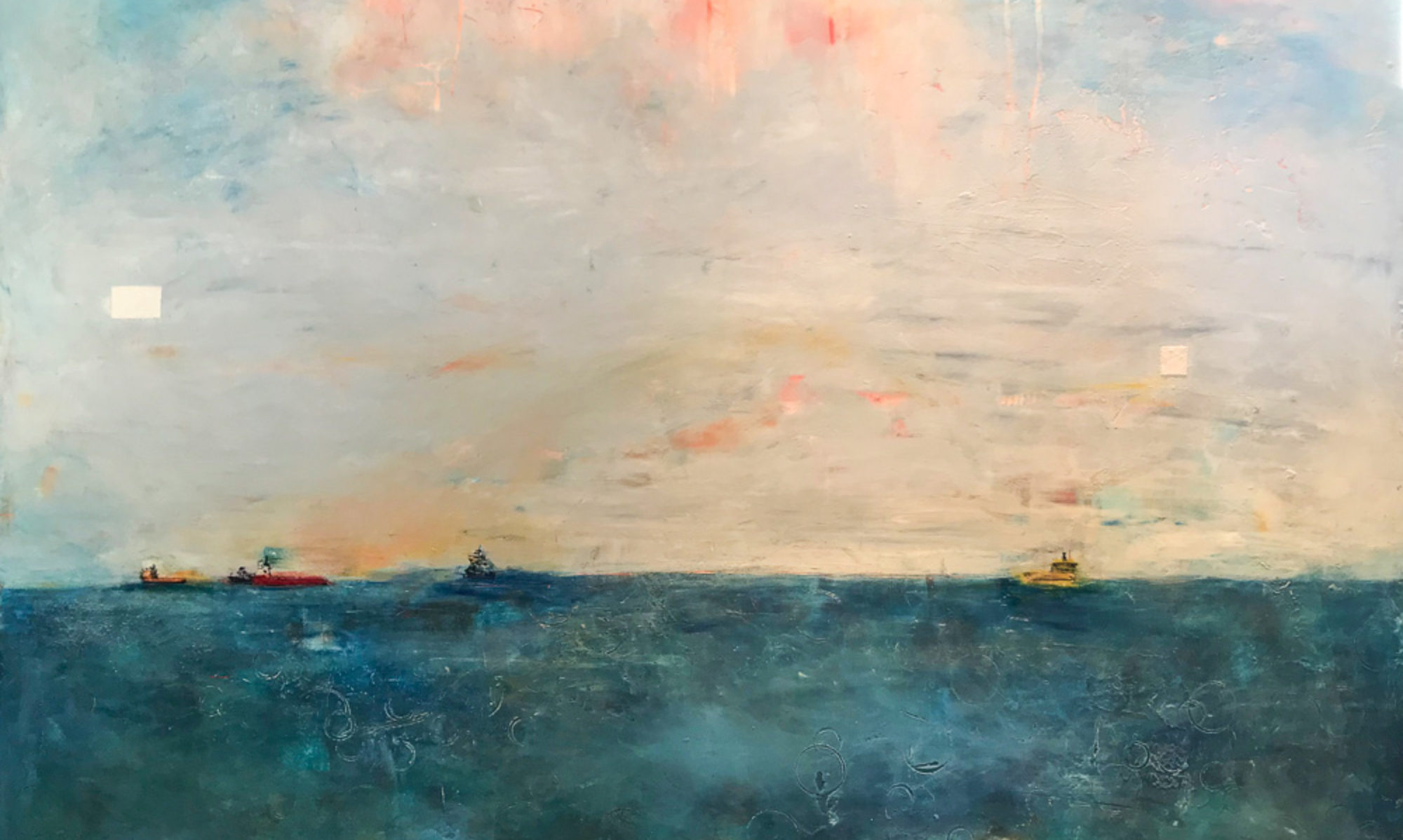Put A Fork In It
You’ve heard that expression “put a fork in it.” Meaning Done. Complete. Ready to go to the table to be eaten. How does “done” apply to art making? It is one of the most difficult and agonizing decisions when you are making art – when to quit?
I see people new to art making go too far all the time. Less is more, but they don’t trust themselves or there is some internal dialog or investment that more is more. I took a painting class a long long time ago in a land far far away (actually, just Merritt Junior College in Oakland CA) and learned so much from the simple pre-class critiques. The instructor would have us pin up our paintings and one-by-one he would visit each one and ask us “What is working here?” and “What is not working?”
But the most informative thing he did was put his hand up to block out parts of the painting, effectively “erasing” them from our view. We could reconsider the piece without that thing that may have gone too far. Then, he would suggest things in the piece that might benefit from being repeated, such as a dot in the background if repeated over and over would make an interesting pattern in the piece. That seemed to be a lesson in the power of mark-making.
Quit While You’re Ahead
I learned to make a piece, stop a bit short, and put it up on my windowsill at work when I arrived in the morning. All day, the piece would catch my eye and at some point the light bulb would come on. Aha! It needs…..this or that…. Then I would rush home to add that thing. But I am usually starting with less is more.
Sometimes I go too far and that is when collage is a good approach. Collage is the equivalent of the instructor’s hand over the piece. I can take a swath of tissue paper and glue it over the parts of the painting that aren’t working, then do more over that tissue paper, like in this piece:
Before

After
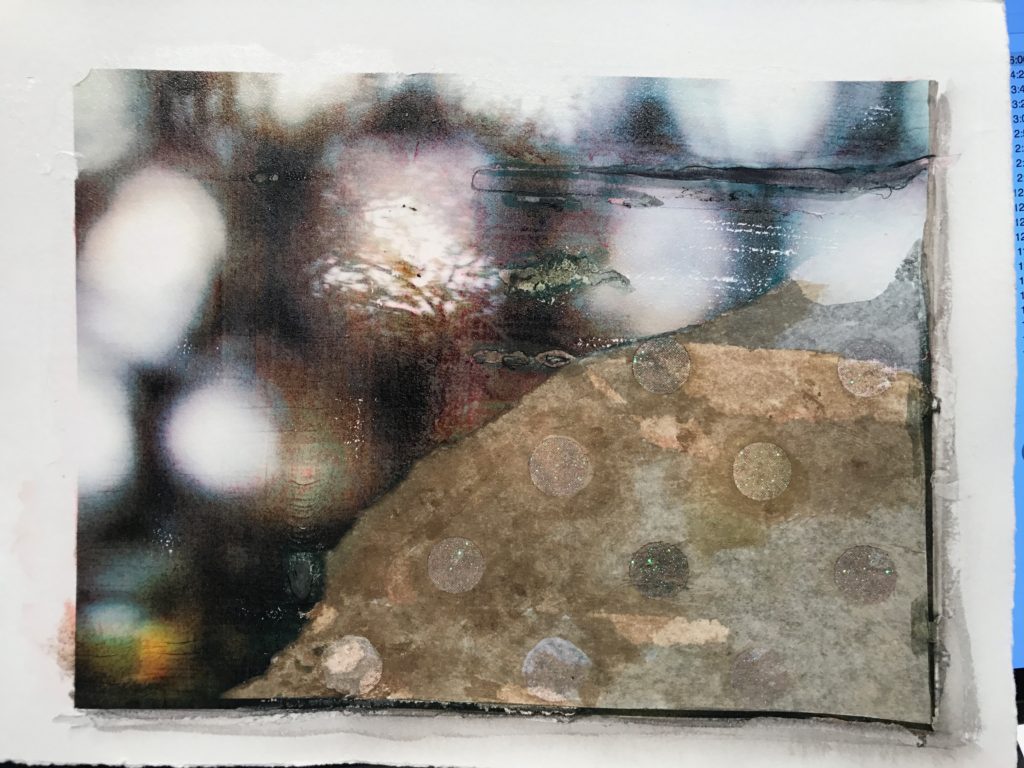
By the way, this piece is still not finished. I want to emphasize the tree, but haven’t quite decided how to do that – with a pen? with watercolor?
Or I can crop down the piece, being brutal to take out extraneous background and close in on the subject so that it really shines. Sometimes less breathing room around a piece is more.
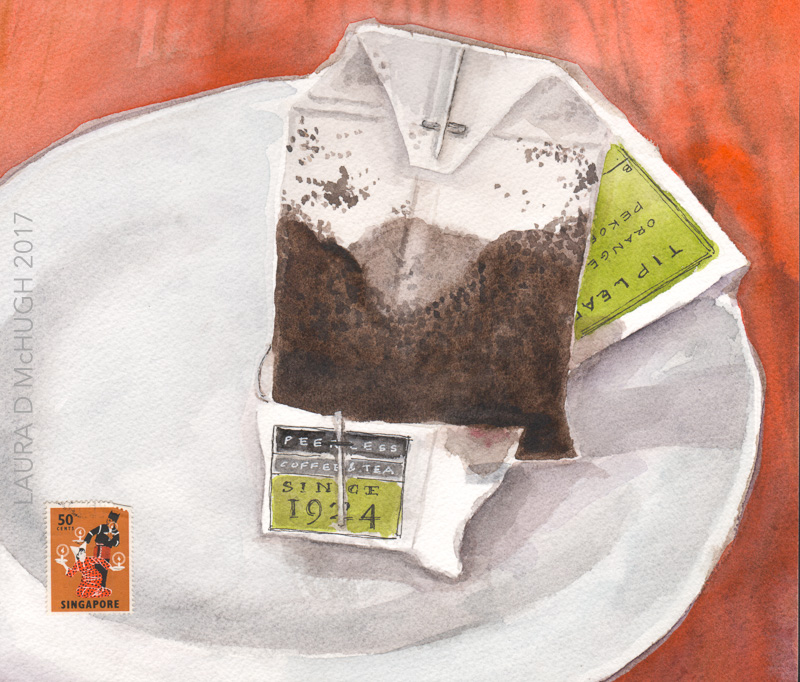
The Stamps…Oh The Stamps
And then there are the postage stamps. Luscious vintage French (mostly) postage stamps I keep in a little container on my bench.
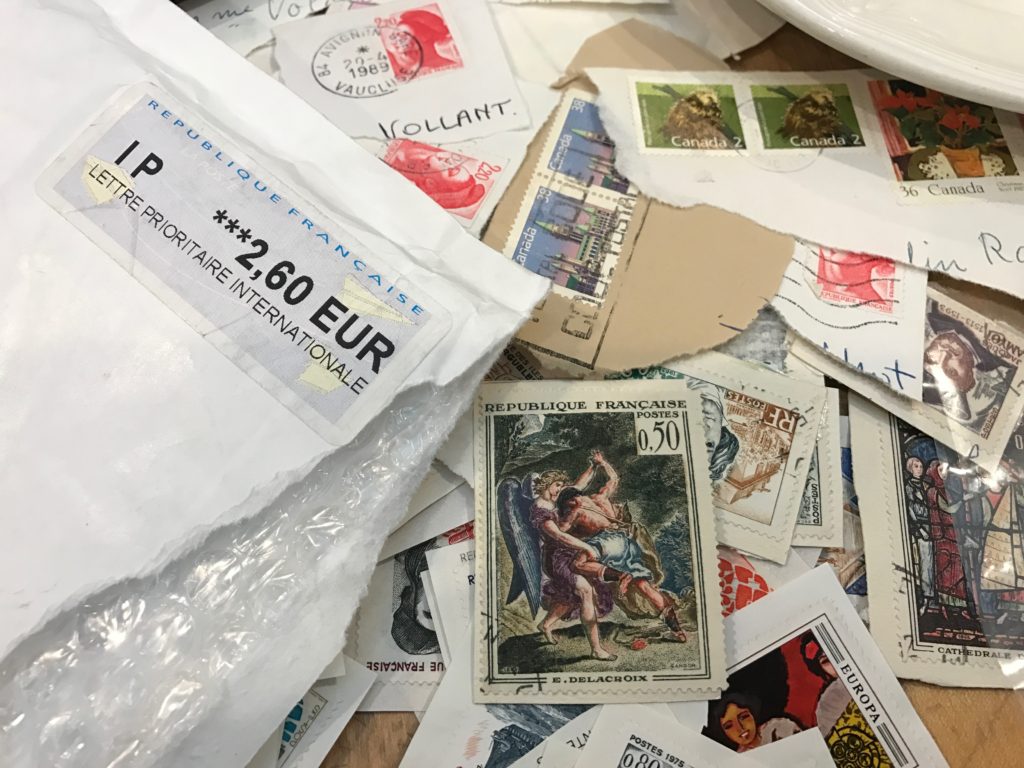 Some pieces just aren’t finished until they have a stamp on them. After making nearly 150 pieces with stamps figuring in somewhere on each, I am no closer to understanding why some pieces benefit from the stamp and why I would never put a stamp on others.
Some pieces just aren’t finished until they have a stamp on them. After making nearly 150 pieces with stamps figuring in somewhere on each, I am no closer to understanding why some pieces benefit from the stamp and why I would never put a stamp on others.
I do use stamps when I have made an actual drawing or painting boo-boo that I want to hide.
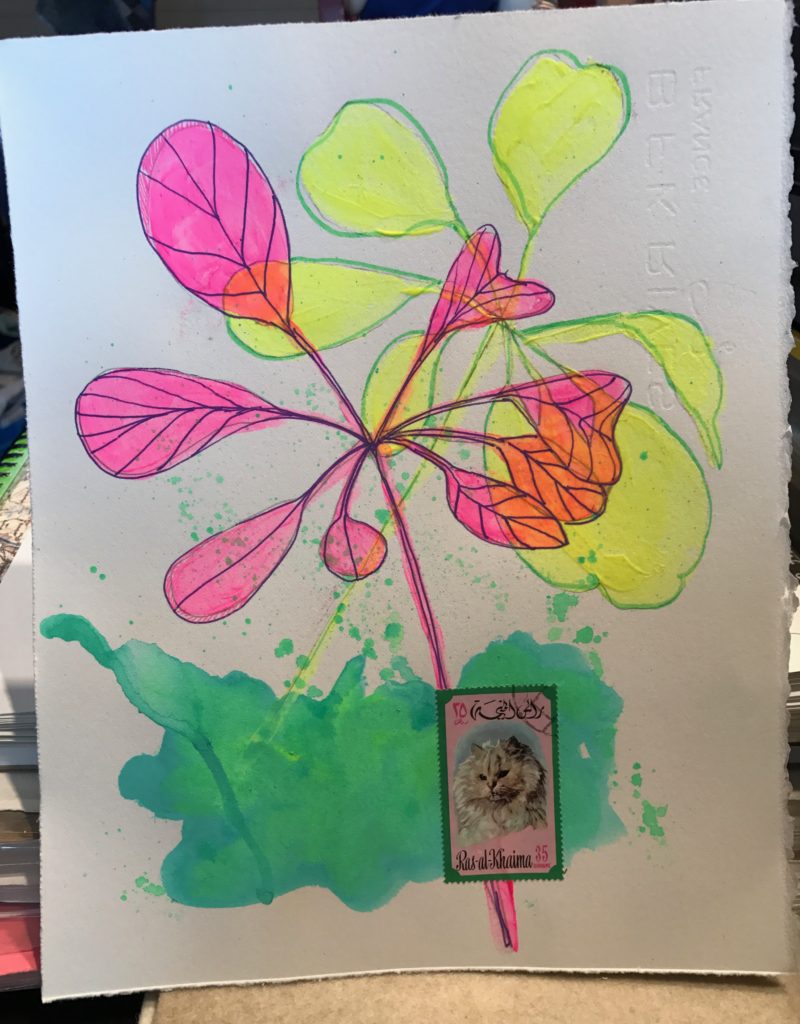
That’s the best place to put the stamp. Or the piece seems unfinished and I cannot think of what more I could paint into it to make it work. So I retreat to the little bucket o’stamps and pick something.
I decide quickly. I don’t agonize over it. Typically find the right stamp after 3-4 tries in my pile – mostly based on color harmony. Then I go on to where and what orientation.
I feel such a sense of peace when the stamp is finally glued in place. Completion. Closure. It is the oddest thing. I’m exploring the other pieces I’m doing where a stamp would seem cheap or trite, and how to achieve that same feeling of closure. I’m not sure what that is just yet, but it shows me just how emotional art making can be.
